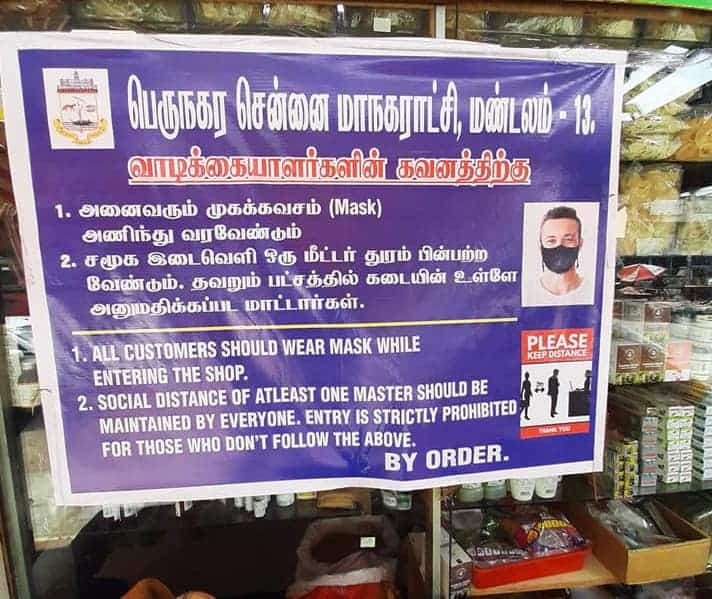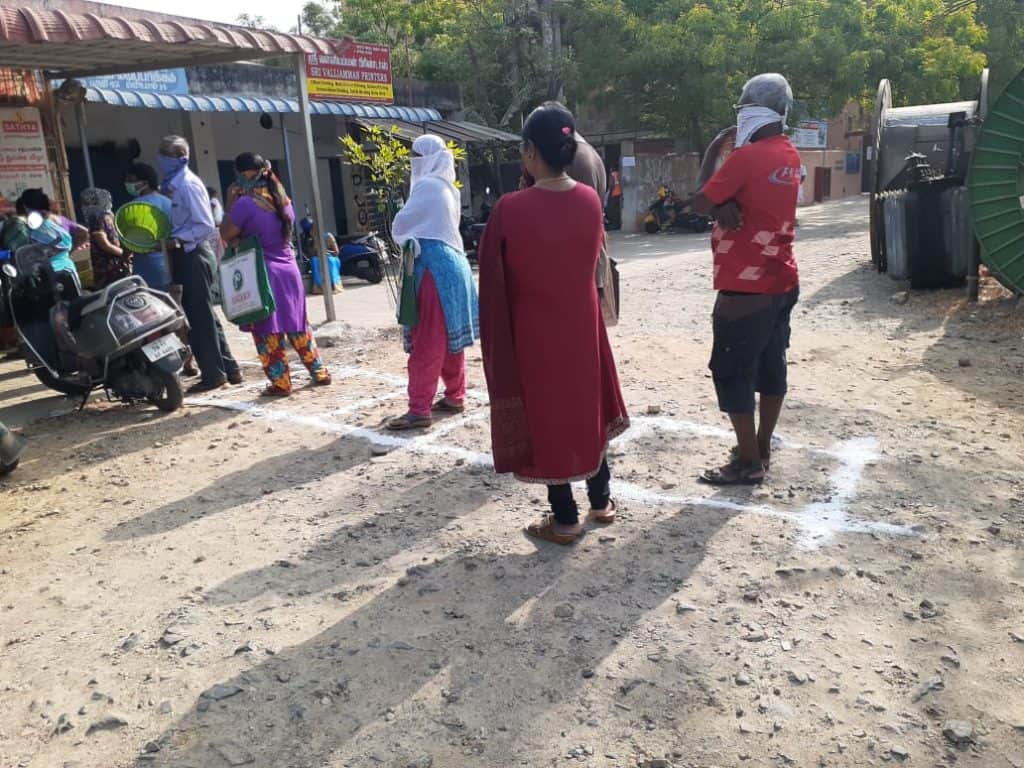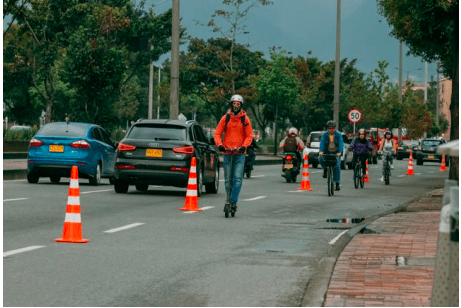‘Social distancing’, a phrase that was alien to a majority of us has now become one of the key weapons in our battle against the ongoing COVID-19 pandemic. Along with masking, limiting contact with others by ensuring a metre’s distance between individuals is one of the recommendations that has been widely acknowledged as a measure that could help contain the spread.
Cities across the world went into extended lockdowns to prevent the spread of the virus. Halting of public transport, closure of shops, movie halls, malls, bars, restaurants and other establishments took place in most cities.
But while crucial to prevent large scale outbreaks, such lockdowns came at a cost. It has had a profound effect on the economy, with many jobs and livelihoods lost. In addition to this, the lockdown has also had negative implications for mental health, with a majority of the population spending long hours in cramped indoor spaces.
Cities are now weighing their options and considering strategies for safely opening up in a phased manner, as further extension of a blanket lockdown becomes unsustainable. At this stage, social distancing becomes a key component that will enable people to return to a public life without undue risk of contracting the virus.
How can Chennai manage this optimally?
Standard Operating Procedures (SOP) outlined

The relaxation of the lockdown has seen the opening up of many shops, restaurants and other public spaces in the city. Malls, movie halls and places of religious worship continue to remain closed. The SOP issued by the government of Tamil Nadu has called for social distancing in all shops and public transport.
- Demarcate a specific waiting area
- Allow only 4-5 customers into the area at a certain point of time
- Transact sales with only one customer at a given time
- Waiting areas outside the shops must have social distancing markers to guide the public.
— Guidelines through notification by the Revenue and Disaster Management Department for shops
Public transport is only available for essential workers. The transport service may open up to the general public at the complete lifting of the lockdown.
- Ensure that buses ply at below 50 % operating capacity
- Do not allow any standing travel
- Ensure separation of space between driver, conductor and passengers
- Digital payment methods are suggested to minimise contact between the passengers and staff
— SOP for Transport Corporations upon resumption of service
Ground reality
The SOPs were laid out and the importance of social distancing repeatedly stressed during the unlocking phase. Shopping areas were sanitised and preparations were made in advance for the return of the customers.
Most establishment owners are glad to welcome their customers and are happy to make necessary arrangements for that. “Since the shop has a few floors, we try to keep the number of customers at each floor to a maximum of 3-5. The others are to wait their turn,” says the proprietor of Kanchee plaza in T Nagar. Not more than two persons are allowed in the elevator at a time and all the surfaces are sanitised regularly.

While most stores have such guidelines in place, some shops have also been found flouting the norms when it comes to social distancing. Small stores which do not have waiting space cause spillover of crowds into narrow footpaths outside. Authorities have cracked down on shops where the social distancing norms have been flouted, penalising them with temporary closure of the shops.

Manasi P of Aminjikarai has been generally worried about going shopping and would rather have avoided it. But she needed a replacement for her mobile phone urgently and since e-commerce delivery of non-essentials was not permitted in the city, she had to make a trip to a showroom in Anna Nagar, where she was made to wait on the pavement in the circles marked for social distancing.
“I would have gone to Ritchie Street for a replacement but I was apprehensive due to the narrow lanes and was not sure how social distancing would be followed so I visited the official showroom instead,” says Manasi.
While bus services have been used only to ferry essential workers such as government staff, healthcare workers and sanitation workers, the limited numbers of buses plying on the roads were found to be flouting social distancing norms, despite stringent guidelines in place. This naturally raises scepticism over how logistics will be managed when the service is open to the public at large.
Navigating urban spaces post COVID-19
How exactly can crowded spaces in cities be managed so that social distancing is maintained and citizens have enough space to carry out their daily activities safely? A slew of measures in public places and in public transport interventions could hold the answer to this challenge in times of COVID-19.
“Tactical urbanism is any quick, low-cost and immediate intervention that can be done on the ground as a pilot, with the involvement of the community; it can be used as a proof of concept that can be scaled up to other areas,” says Venugopal AV Senior Research Associate for Urban Development at ITDP India.
This could involve a variety of techniques such as the use of pop-up lanes to prevent overcrowding, cones to demarcate various areas, marking on the ground to direct people to stand at certain spots and control flow of movement. Some of these strategies have already been seen in practice in recent times, with social distancing markers in shops and markets being adopted in many places.
Examples from around the world 1. Paris is creating 650km of pop-up cycleways in the coming months. 2. Milan will transform 35km of streets to pedestrian and cyclist priority lanes post the lockdown. 3. Bogota and New York have expanded their cycle sharing systems and have offered subsidies to frontline workers. 4. In London, streets have been closed off to private motor vehicles and are being transformed into social spaces through quick interventions. 5. New Zealand has incorporated Tactical Urbanism as part of the government policy to provide funding to cities. Source: ITDP

Pic: ITDP/Gabriel Leonardo Guerrero Bermudez/iStock
The Ministry of Housing and Urban Affairs (MoHUA) has issued guidelines for pedestrianisation of market places to ensure social distancing. Crowded marketplaces have been a source of major outbreaks, especially in the case of Koyambedu wholesale market in Chennai. The MoHUA guidelines call for cities with greater than one million population to identify three market places for pedestrianisation and cities with less than one million population to earmark one marketplace.
MOHUA recommendations include:
1. Rearranging of market spaces to ensure social distancing
2. Erection of temporary barricades to prevent crowding
3. Closure of roads to increase room for pedestrians
4. Conversion of on street parking into walkways
5. Creation of cycle paths/pop up lanes for cycles
Some quick interventions possible in Chennai
With the Mega Streets project launched, Chennai is at a stage where it could take advantage of the tools in its arsenal to make the city’s streets pedestrian and cyclist friendly. This would help ensure social distancing in public spaces, markets, shopping hubs, and pave the way for safe and accessible modes of transportation such as cycling.
There is a possibility that there may be an increase in use of personal motor vehicles and shunning of public transport as a direct impact of COVID-19. But a majority of Chennaiites rely on public transport, walking and cycling for their daily commuting needs. Therefore a sustained focus in improving the safety and accessibility of our streets and public spaces is also necessary for its implications on public health.
Road closures (for vehicles) could be expanded to areas that see major foot traffic in order to make more room for pedestrians. Car-free Sundays have been a regular feature in Besant Nagar and has proved successful in providing a space for the public to relax and move freely. Similar efforts across the city could result in effective social distancing.
Encouraging the fledgling bike-sharing system could provide much needed last mile connectivity for the public to access various parts of the city and ease the burden on public transport such as buses.
While the effects of the pandemic will be felt for many months to come and will continue to reshape public life, seizing the moment to implement immediate interventions could be key to reducing the ill effects of the new normal.